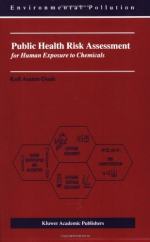|
This section contains 818 words (approx. 3 pages at 300 words per page) |

|
Environmental regulatory organizations such as the U.S. Environmental Protection Agency (EPA) have historically dealt with pollution problems through control or remediation, as opposed to the pollution prevention (commonly called "P2") approach. However, treating pollution at its source can minimize, and sometimes eliminate, pollution. Environmental education is one effective, proactive strategy to implement P2.
An Educated Public
One goal of environmental education is to educate the public so that it is better informed to handle the issues and problems regarding pollution, whether it comes from industry, agriculture, or from the home. Educational programs, classes, pamphlets, and other informational products provide the public with the necessary skills to make informed decisions and take responsible action. For instance, activities at the community level are often successful with such grassroots projects as school environmental curricula, hazardous waste collection days, and stream and river cleanups. However, environmental education programs are often at...
|
This section contains 818 words (approx. 3 pages at 300 words per page) |

|


